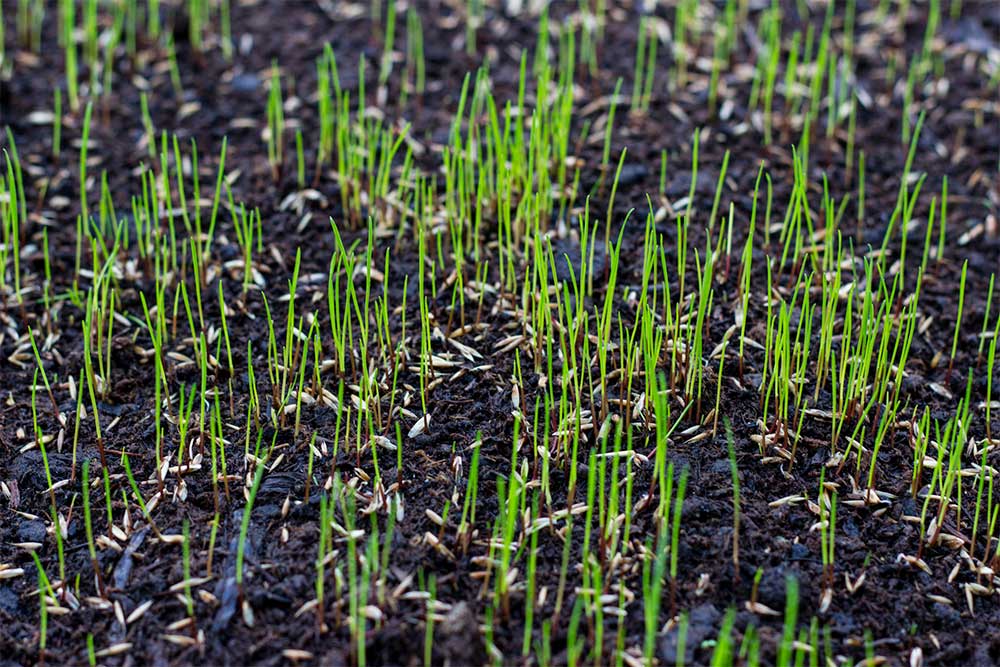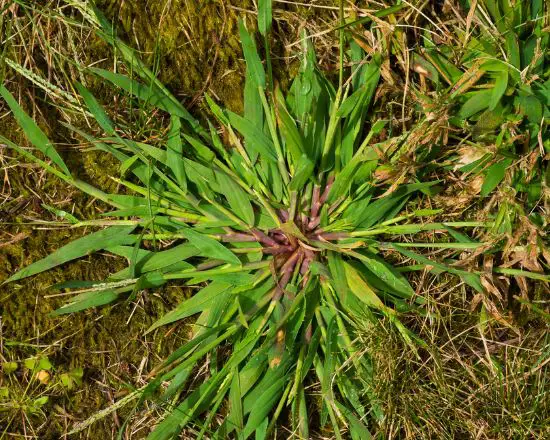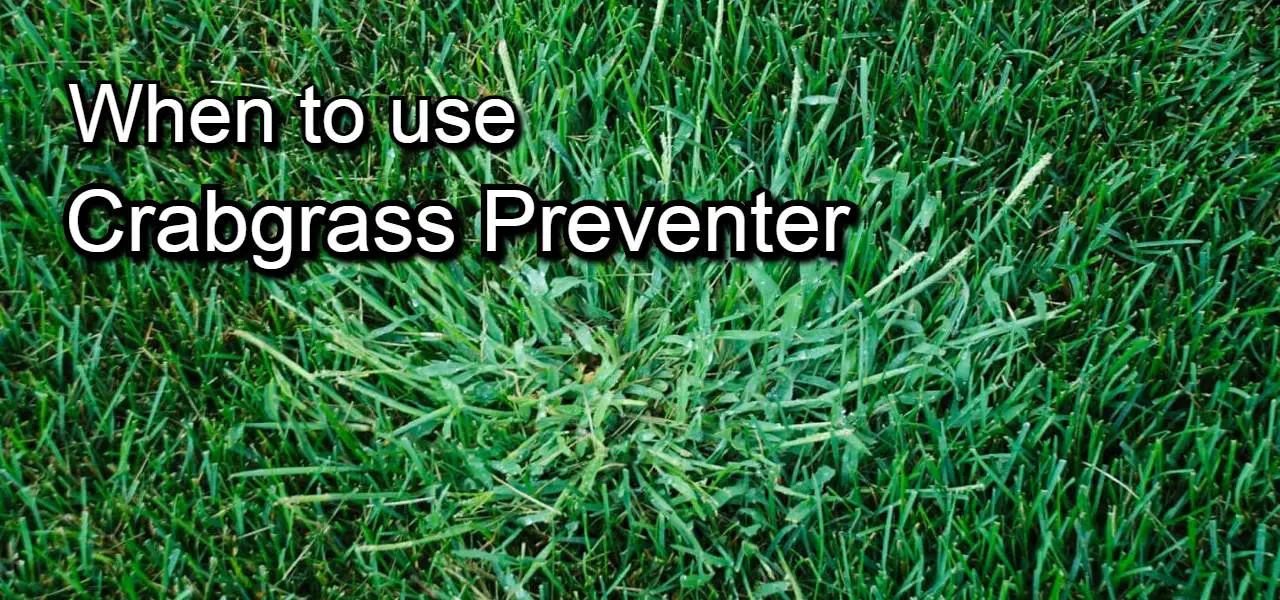Crabgrass is famously one of the most challenging lawn weeds to get rid of. This weed is best dealt with before it becomes a big problem. Luckily, there are products known as pre-emergent herbicides that are made to prevent crabgrass from taking over – but people wonder, when is the right time to use crabgrass preventer? There are many things to take into account, such as precipitation, location, temperature, and more. Applying a pre-emergent crabgrass killer at the right time is crucial – getting it wrong means wasted money, time, and effort, not to mention a lawn overrun by grassy weeds. Let this article guide you through the dos and don’ts of when to apply crabgrass preventer.
When to use crabgrass preventer: The general answer is spring, just as the seeds are about to start germination. Soil temperature should be around 55-60 degrees Fahrenheit. Your lawn grass should be dry and well established at the time of application, with rain in the forecast soon after.
The Right Time to Apply Crabgrass Preventer
Here are three of the best pre-emergent herbicides against crabgrass, all of which are selective and safe for lawns. 👇
When to Apply Your Crabgrass Preventer
Season: Apply Crabgrass Preventer in the Spring

As mentioned, Spring is the ideal time to apply a pre-emergent herbicide for crabgrass. If crabgrass preventer is applied too early, you risk it washing away or disintegrating before the weed germinates, rendering it ineffective. However, apply the preventer too late, and you risk seeing it take no effect at all, forcing you to try again with a post-emergent herbicide.
We describe that window of time as the first warm nights of Spring. Some say it is reliable just to watch for when forsythia has begun to bloom. Luckily, we have a more precise way of knowing exactly when to lay down crabgrass pre-emergent – the temperature of the soil.
Temperature: Apply Crabgrass Preventer When the Soil Warms Up
The soil must be warm enough to encourage the crabgrass to germinate, or else a pre-emergent won’t work. Remember, your lawn’s specific soil temperature is both different from a lawn 3 states over and your neighbor’s lawn. Therefore, we recommend you start using a thermometer during the first signs of Spring and see for yourself. A regular meat thermometer stuck one inch into the soil for 5 minutes will do the trick. The temperature you are looking for is somewhere between 55 and 60 degrees. Any higher, and it may be too late, although it won’t harm your lawn to try.
Weather: Apply Crabgrass Pre-emergent Before or After Rain

As rain is sometimes unpredictable in Spring, try to time the application of a crabgrass preventer with the weather. The grass should be relatively dry on the day of application, but a shower or two afterward will help the product soak into the soil and affect the seeds. Go ahead and apply if you see rain in the forecast for the next day. If you live in a region that is dry or there is no rain in the forecast, give your lawn a proper watering after application.
Location: When to Use Crabgrass Preventer in your Zone
Because weather and temperature both vary from state to state, it is important to keep in mind that what works for someone in Michigan may not work for someone in Texas. Use GreenCast’s interactive map to find out when to expect the right soil temperature for applying crabgrass preventer in your area. Simply enter your location and the date to find the soil temperature this year. The average of the past 5 years, and the average of the last 10 years.
Remember that shade or wind can also affect the temperature of your lawn’s soil. It is most reliable to test the temperature yourself. Many pre-emergent crabgrass killers also advertise not to be used in high temperatures. Harsh chemicals accelerate in the heat and may result in harming your lawn.
Applying Crabgrass Preventer After Seeding
When establishing a new lawn, it is often wondered – how soon after seeding my lawn can I apply crabgrass preventer? It may be that you have struggled with crabgrass in the past, and want to deal with it before it becomes a problem. However, newly seeded or sodded grass is very fragile. As a rule of thumb, the new grass needs to have been mowed three to four times before it is safe to apply a pre-emergent. New grass seed needs a chance to germinate and grow. Only then will it be strong enough to overcome the damage any herbicide can do to unestablished plants.
Stop the Spread of Crabgrass

The key to preventing crabgrass is killing it as it germinates. No pre-emergent herbicide can stop crabgrass from germinating, but it will stop the grassy weed from sprouting up and spreading. Keep in mind that germination will occur first in the warmest areas of your lawn, and last in shady, cool spots. For example, crabgrass likes the heat, so it is often found near pavement or concrete where heat is conducted better than soil.
For example, crabgrass likes the heat, so it is often found near pavement or concrete where heat is conducted better than soil. These weeds will germinate faster than the others. In these areas, make sure you are early enough with your pre-emergent herbicide to catch them before they sprout up. Once established and visible, the battle to kill crabgrass is much more difficult and may require several applications of pricey products. This is especially difficult if you are fond of your turf variety and don’t wish to harm it.
How to Apply Crabgrass Preventer
Once you have pinpointed the correct time for applying a pre-emergent for crabgrass, you need to make sure you are prepared accordingly. Most preventative solutions will be liquid and need to be applied with a backpack or hand-held sprayer. Some are water soluble and should be applied the same way after mixing. Always remember to read and follow the label – when mixing or diluting, be careful not to up the dosage, as it could become harmful to turf grass. On the day of application, be sure the grass is not already wet. If there was a heavy morning dew, wait a few hours into the day until the grass is dry again. This way the solution does not just stick onto the blades of grass but gets down into the soil. Keep in mind, moisture after applying will only help the solution soak into the soil.
Start spraying in even strokes from one end of the lawn to the other. Make sure to get the edges of the lawn too. Crabgrass likes to grow where the soil is hottest (near pavement or concrete). Use all precautions the label suggests and don’t allow traffic on the lawn for a full day.
FAQ: Frequently Asked Questions
Can you apply crabgrass preventer on wet grass?
Can you put down too much crabgrass preventer?
Can you put down crabgrass preventer and fertilizer at the same time?
Is crabgrass preventer safe for St. Augustine grass?
Will crabgrass preventer kill existing crabgrass?
How long do pre-emergent herbicides for crabgrass last?
Conclusion
Remember, the very best crabgrass prevention is a thick, healthy lawn. Turf that doesn’t contain thin spots is less likely to be overrun by weeds due to the dense root system not allowing room. Proper maintenance, along with regular fertilization, will help ensure your lawn is healthy. A healthy lawn is ready to combat invasive weeds such as crabgrass. However, putting down a pre-emergent to prevent crabgrass is not a bad idea if you have struggled with it in the past. Be sure to apply before the seeds have emerged when the soil has just warmed up to the right temperature. By following this advice, you should see success in preventing crabgrass from invading your lawn.
We recommend products from companies like Amazon, which we also get a small commission from, to keep this website running. However, we want to stress that all of the products we recommend are tested, used by us, and 100% unbiased and true.

